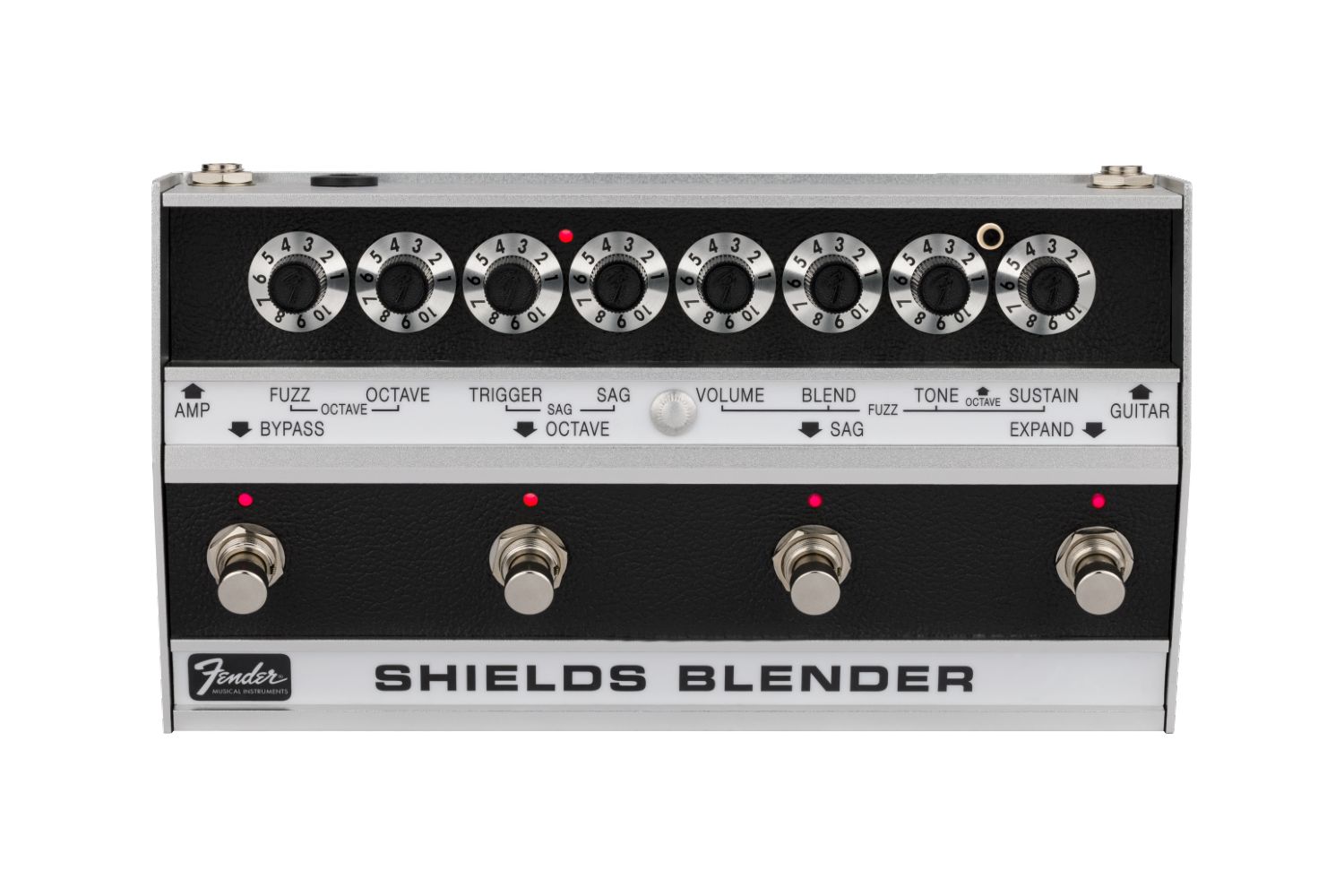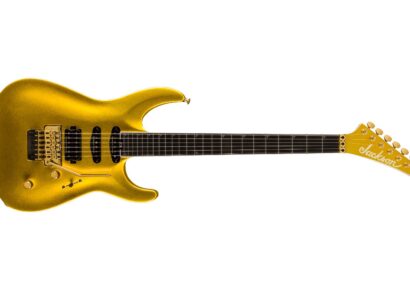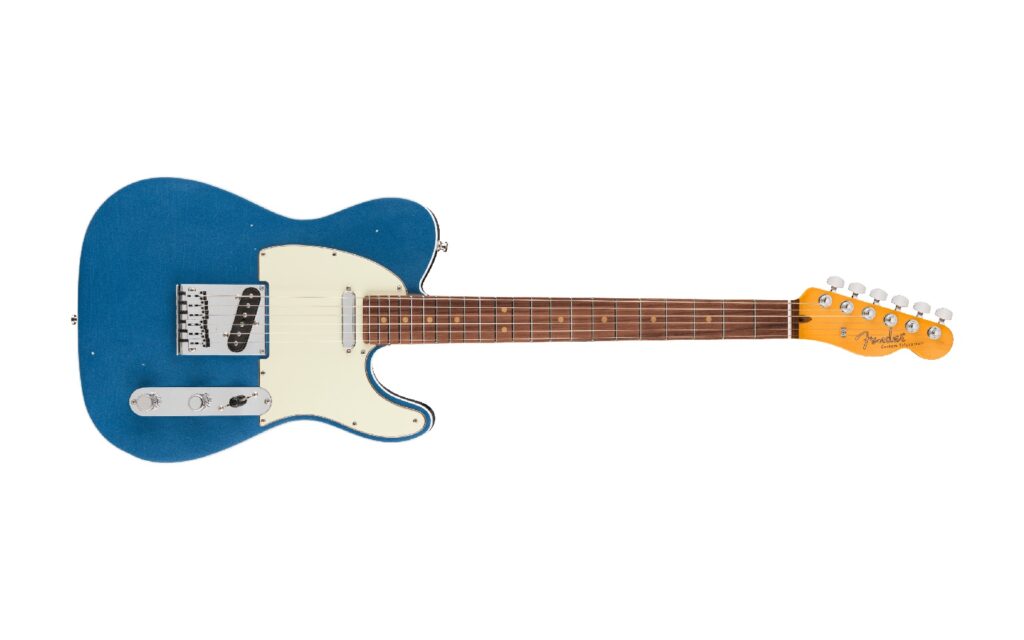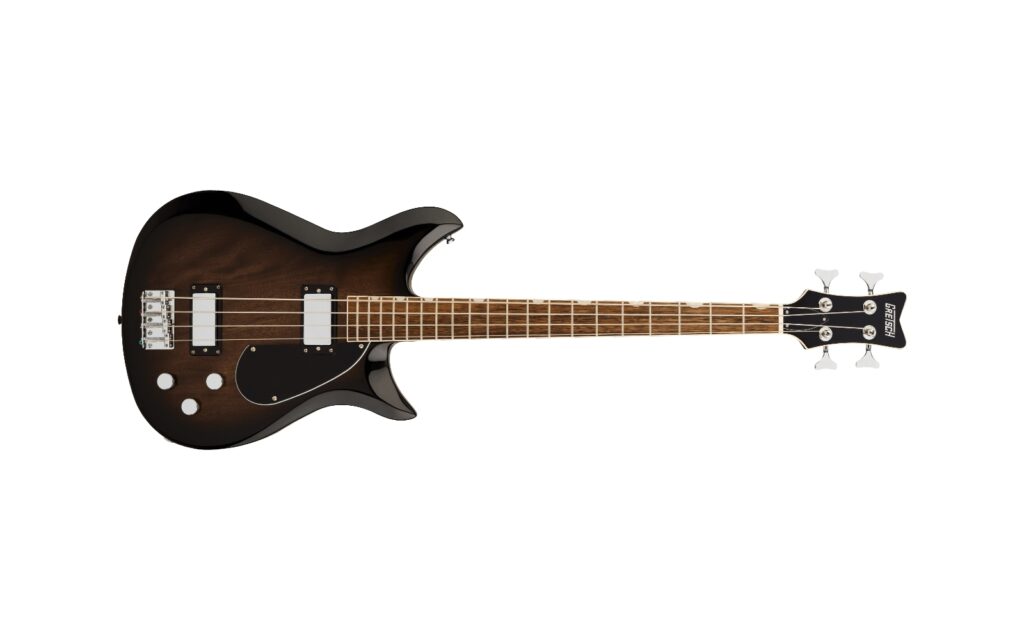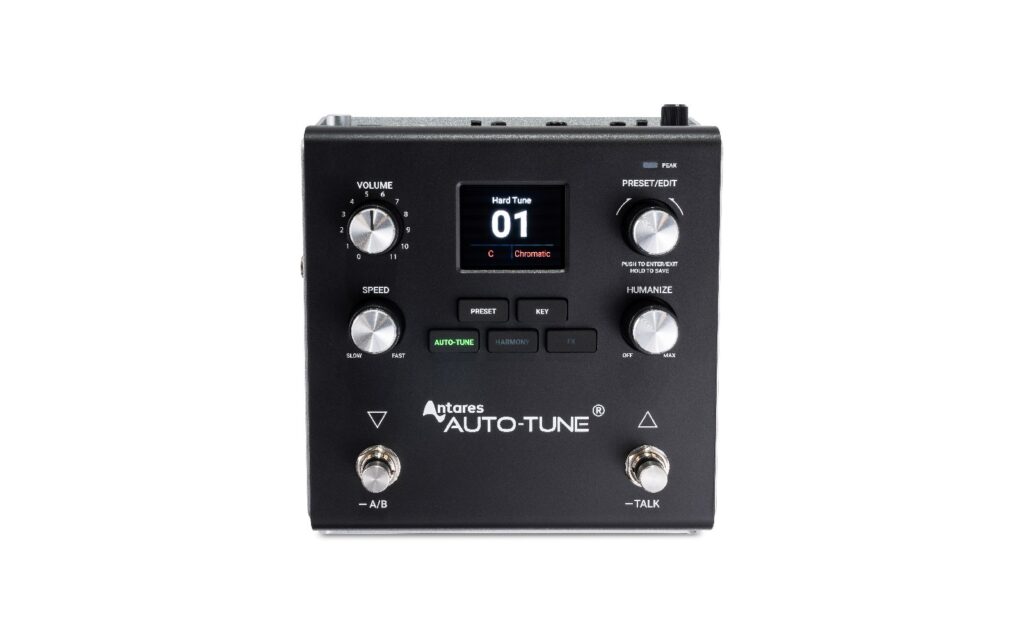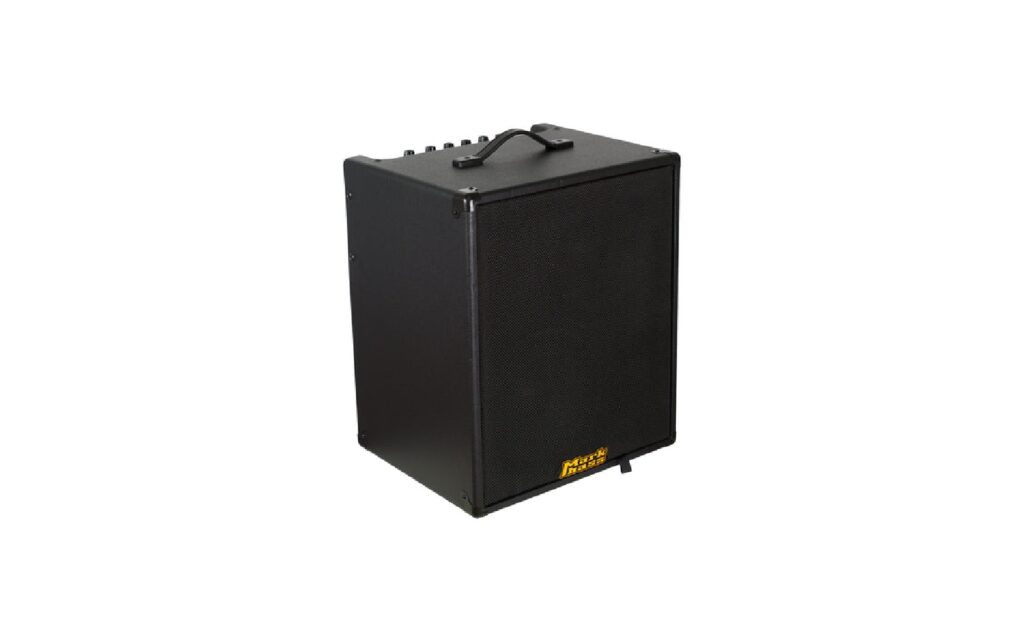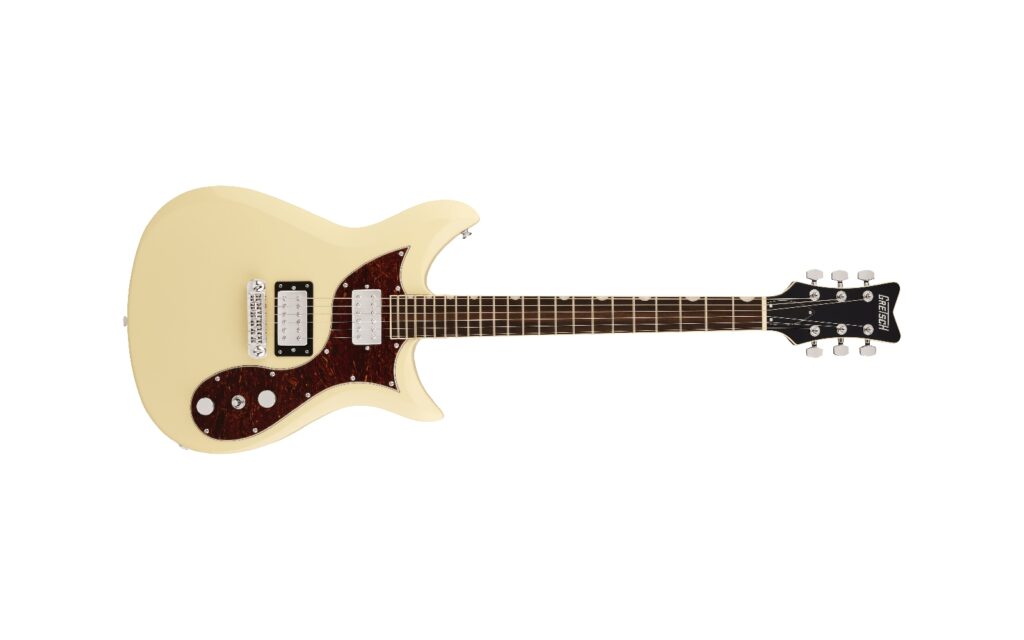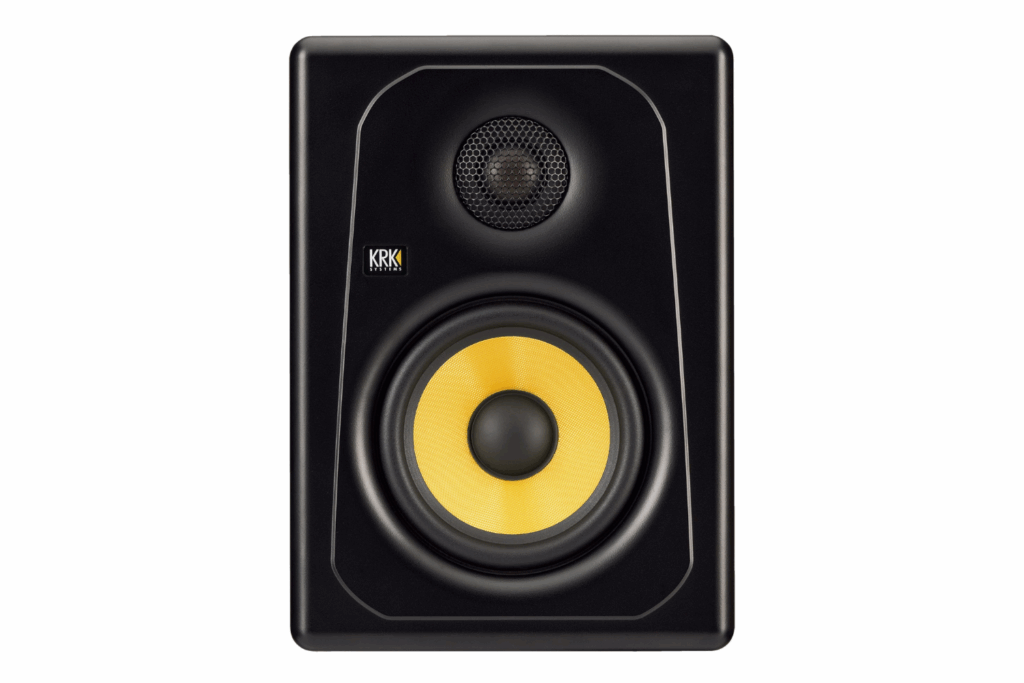Fender Shields Blender | Fender Music Australia | RRP $549 AUD
The Fender Shields Blender was released a few months ago and the guitar community went wild for it. So wild in fact, that the pedal is now a part of their standard production range. Kevin Shields is a stalwart of the rock and alternative music scenes. Having pioneered the shoegaze genre with My Bloody Valentine, 1991’s album Loveless solidified them as a force to be reckoned with. Shields’ playing is unique, often with heavy use of a tremolo bar on a Jazzmaster, coupled with consistent strumming, that produces a modulating, expansive sound. While shoegaze is often associated with extensive use of reverb and delay, Shields’ own brand of playing, as well as the resonance of the springs of the Jazzmaster’s bridge, did away with reverbs and echoes, instead creating space with his technique as well as fuzz and drive pedals to compression and augment the resonance of the guitar. Shields also employed an octave paired with his fuzzes, adding extra low-end, and when that signal hits the fuzz it blends together, the two octaves becoming more difficult to discern, ultimately summing in one, monstrous sound.
Read more gear reviews here.
One pedal used extensively is the Fender Blender fuzz, a four knob fuzz from the late 60s. Featuring a standard three knob operation, Volume, Sustain and Tone, as well as Blend knob that allows users to mix their processed and unprocessed sounds together. Shields’ own Fender Blender is an anomaly that was cloned by Fender, including whatever modified wiring it’s received over the years. Original prototypes felt and sounded wrong to Shields, and at his insistence, Fender opened up his personal Bender, to find that it had been modified at some over the years, but it offered the key to his sound. The Fender Shields Blender combines everything about the original Fender Blender, coupled with additional octave and sag controls and footswitches.
The Fender Shields Blender is an eight-knob, four footswitch pedal in an enclosure modelled of the original unit. There’s a fuzz and octave knob, controlling the amount of suboctave fuzz blended in. These two knobs can be toggled on and off via the Octave footswitch. The Sag footswitch controls the Sag and Trigger knobs, which allows you to dial in unique sputtering and ducking effects that are introduced by your playing dynamic, as well as the Trigger knob dialling in how much the signal sags and sputters the harder you pick. At maximum settings, the signal begins to fold in on itself entirely for a synth-like fuzz. As on the original, the Shields Blender has Volume and Blend control, as well as Tone and Sustain controls.
The pedal features a single input and output, and is powered by 9V Battery or a centre negative AC adaptor, all located on the top of the unit.
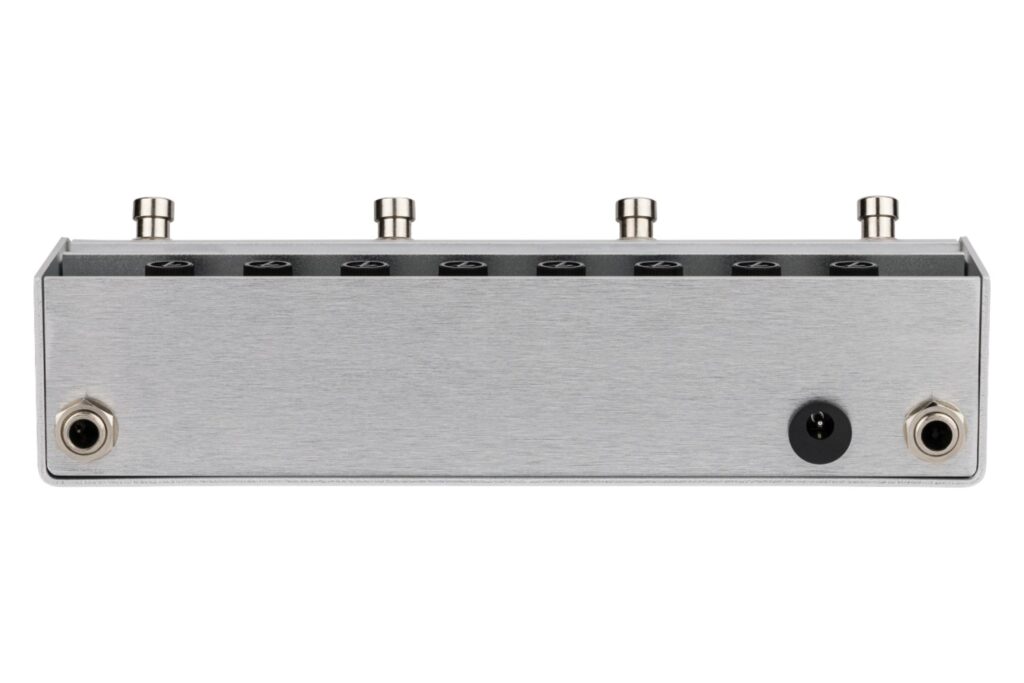
The Shields Blender is a unique beast, initially being overwhelming with the amounts of knobs and footswitches available, but it’s well laid-out with clearly labelled components. Toggling the Bypass switch on/off immediately engages something reminiscent of Shields’ own sound, but it’s also easy to dial in a little fuzz if that’s all you need. The ability to separately toggle the different circuits and effects on and off makes the Shields Blender a one-stop-shop, though an ‘all on, all the time’ sound is tough to move past.
The octave instantly bolstered my tone, and dialling it up to 10 blends in so much low end that the guitar tone begins to melt together into a gooey, warm, concoction. The Trigger and Sag controls were pleasant at modest settings, my guitar’s sound crumbling under its own weight the harder I picked, and the fuzz becoming increasingly synthesised-sounding. Extreme settings like this can be dialled back with the Blend knob, which allowed me to quickly set and forget the pedal’s tone, while retaining the dynamic of my cleaner tone. From here, the Tone and Sustain knobs are more traditional for fuzzes, rolling off high-end and compressing it all together respectively.
The Fender Shields Blender represents a few things: the original Fender Blender fuzz made famous throughout the 70s after its release in the late 60s, as well as Kevin Shields’ own famous guitar tones, having shaped a lot of alternative music as we know it.
Shields used the Fender Blender extensively, though his personal pedal had some anomalies that made it unique, and this pedal is what Fender has modelled for the Fender Shields Blender specifically. Extended controls give the user an octave to mess with, a common coupling with fuzz, as well as Sag controls that produce a dynamically charged addition that responds to your playing with varying intensity depending on how you set it. Additions like this are the key to Kevin Shields’ wall-of-guitar sound, the guitar’s tone folding and falling apart in a thick, fuzzy mess.
Separate footswitches allow you to toggle all of these in and out, while eight knobs offer precise tone adjustments for a sound as effected or subtly augmented as you please. The Fender Shields Blender packs a lot into a very cool looking enclosure, but it’s also practically and intelligently laid out, easily communicating the uses and functions of its knobs and switches. A handy secret weapon to have around the studio, or a stalwart of your pedal board, the Fender Shields Blender is a great option for every guitarist or bassist.
For local enquiries, visit Fender Australia.
